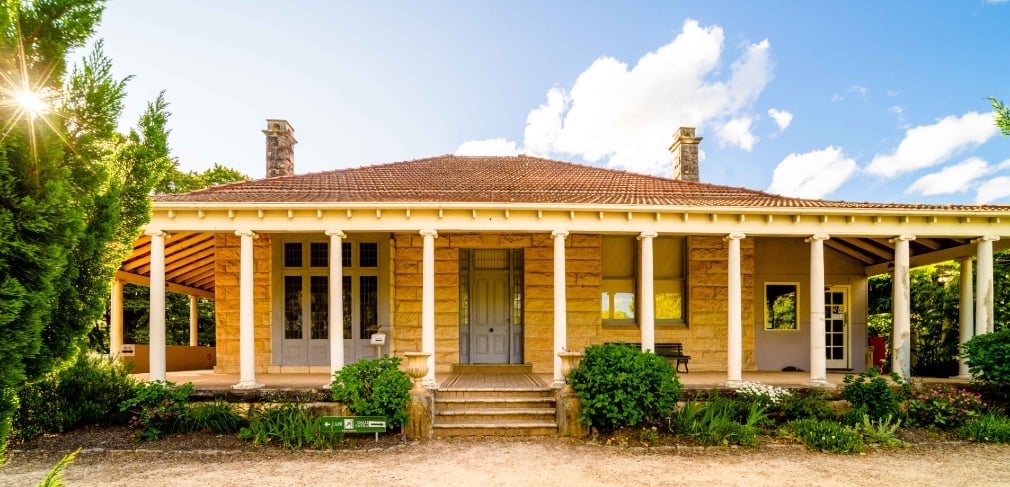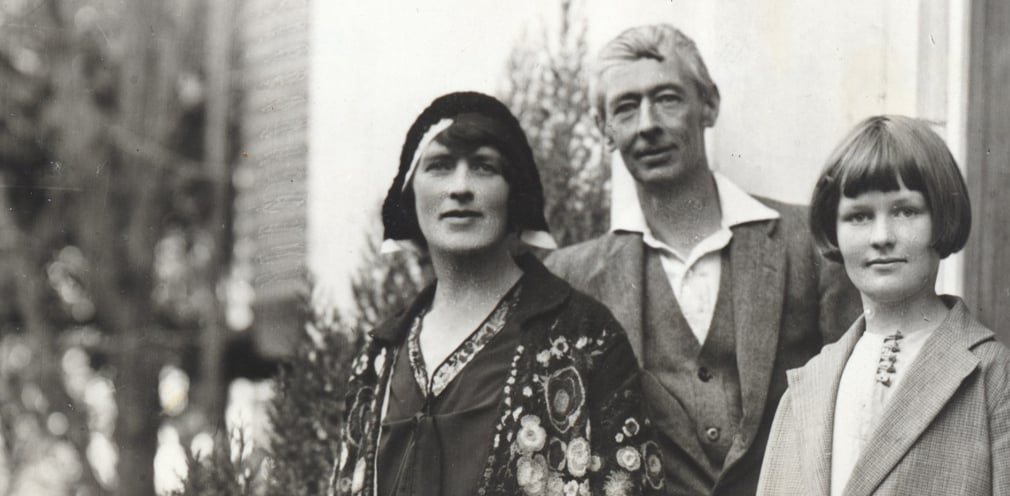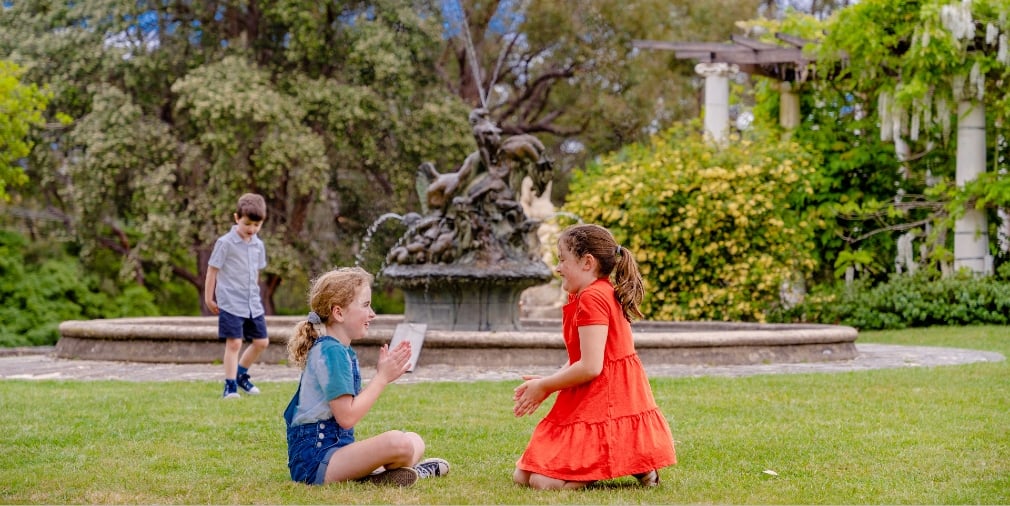It’s been 50 years since the National Trust (NSW) began caring for the Norman Lindsay Gallery at Faulconbridge. Helen Glad, art historian and grand-daughter to Norman Lindsay, reflects on its acquisition and the crucial role members have played in funding essential work to conserve his legacy.
BY HELEN GLAD
In 1969 Norman Lindsay made a bequest to the National Trust (NSW). He gifted a collection of his works – 16 watercolours, 17 oil paintings, nine pen drawings, and assorted pencil drawings, ship models, sculptures and statuary. The bequest included bookcases and furniture decorated by Norman and “all my paints, painting table and other materials dealing with my craft”.
Norman’s will stipulated that the National Trust had to acquire his Blue Mountain home, Springwood, to house the bequest. The problem was that his wife, Rose, owned the property. Supported by The Australian newspaper, an appeal was started in 1970 to raise funds for its purchase. Among members of the Appeal Committee were Sir Robert Menzies, Dr HC Coombs, Kenneth Slessor, Geoffrey Dutton and Douglas Stewart. After $30,000 had been raised, a generous final donation of $50,000 from Mr S.H. Ervin was enough to secure the property and allow for necessary restorations. Governor-General Sir Paul Hasluck officiated at the opening on 24 February 1973.

Creative spaces
Situated on the traditional lands of the Dhurag people, the property was home to the Lindsay family – Norman, Rose and their daughters Jane and Helen – from 1912. Norman produced a prodigious amount of art in the house and grounds. Paintings,pen drawings, etchings, cartoons for The Bulletin, novels and the Australian children’s classic, The Magic Pudding, poured out of his fertile mind.
When he wanted a diversion, he created ship models and garden statues of fauns and nymphs. Rose saw to the responsibilities of raising their two daughters and entertaining the many visitors who made a pilgrimage to Springwood. She managed the business side and ensured, as his chief protector, he was not distracted from his art. She also reproduced the etchings which he began creating seriously during the First World War.
An etching studio was built on land below the main house, which enjoyed the light demanded for fine work on metal plates. The studio provided space for a press on which Rose printed the etchings individually. Collaboration between artist and printer produced 375 etchings over a period of 20 years.

Restoration and improvements
For 50 years, the National Trust has addressed the complex requirements of maintaining the collection, the house and the grounds through appeals and grants. The original bequest has also increased significantly via donations and the Cultural Gifts Program. In 1988 a Bicentennial grant was used to cast the Seahorse Fountain and several other statues in bronze. This grant also enabled originals in the courtyard to be preserved.
Centenary of Federation funds enabled the National Trust to purchase the etching studio in 1998 and restore it. Built on a separate title, it had been converted into a house in the late 1940s and sold during the 1960s. The grant also covered the installation of much-needed modern lighting, a hanging system and air-conditioning. The kitchen was refurbished and, for the first time, opened for viewing. The collection store was overhauled with suitable racking and climate control to hold a diverse collection of art and objects safely. Visitors now experience only Norman’s art on the walls and have a sense of the domestic atmosphere where it was created.
Caring for the cement statuary made in the garden has been another challenge. Material has fallen, and early attempts to restore broken pieces were not always successful. Happily, recent years have seen the difficulties redressed through suitable conservation practice.

Invisible mending
As in all heritage properties, much of the National Trust’s work at Springwood is unseen, but vital to safeguarding the property and collection. Even when the results are invisible, the generosity of National Trust members in responding to appeals has been immediate and crucial to making the work possible.
The Seahorse Fountain required expensive and essential repairs due to an invasion of roots from the coral trees. When the painting studio needed extensive work on both its interior and exterior, the members again responded with generosity. Recently, an appeal provided the funds for lifting tiles in the courtyard, painting the veranda columns and replacing the wisteria pergola. Another benefactor offered funds for work on the steps to the pool and stabilisation of the pool itself.
The surrounding area will also be cleared of invasive vegetation. The pool site, which has been discussed for years, will now be ready for the 50th anniversary celebrations in February. The gallery volunteers are a wonderful, talented group. They enjoy any challenge – from acquiring the skills to clean a cement nymph to conducting tours. Nothing seems beyond them. Their dedication and enthusiasm are to be applauded, particularly after the difficult past couple of years.
Plan your visit
Norman Lindsay Gallery is in Faulconbridge, NSW, and is open Thursday to Monday from 10am – 4pm. Last entry is at 3pm.
Join the anniversary celebrations
Celebrate the 50th anniversary of the opening of the Norman Lindsay Gallery with a visit to our special exhibition, featuring an array of fine works loaned from public and private collections. Exhibition open 10am – 4pm, Thursday – Monday from Saturday 25 February – Monday 29 May 2023. Book tickets.

